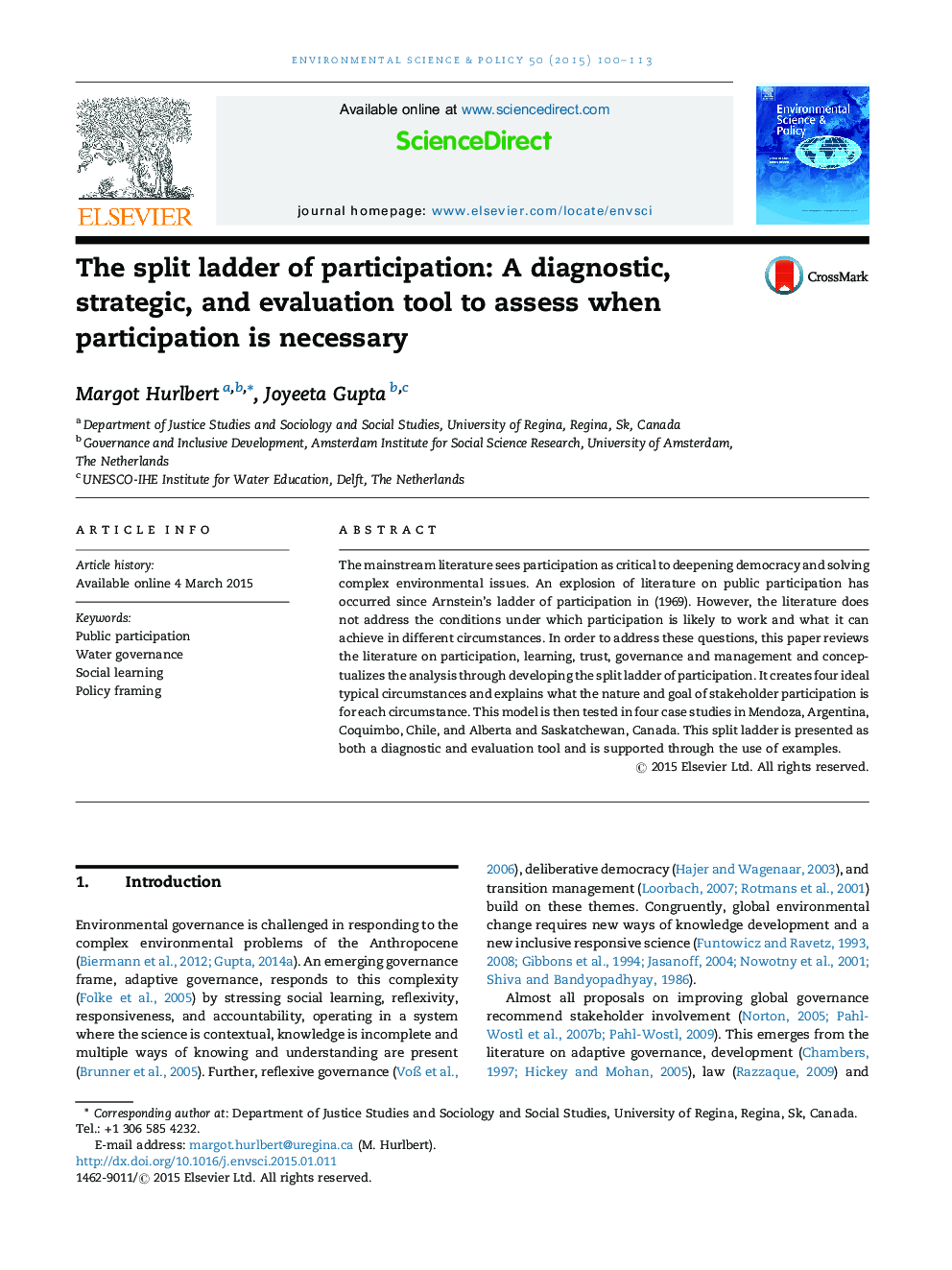| Article ID | Journal | Published Year | Pages | File Type |
|---|---|---|---|---|
| 1053485 | Environmental Science & Policy | 2015 | 14 Pages |
•A split ladder of participation is developed based on uncertainty and policy problem.•Structured problems require minimal participation and can be responded to in a technocratic manner.•Moderately structured problems can entail differing degrees of participation depending on trust.•Continuous tackling of unstructured problems with participation allows for deep social learning.•The split ladder can be used as a diagnostic, strategic, and evaluation tool in policy making.
The mainstream literature sees participation as critical to deepening democracy and solving complex environmental issues. An explosion of literature on public participation has occurred since Arnstein's ladder of participation in (1969). However, the literature does not address the conditions under which participation is likely to work and what it can achieve in different circumstances. In order to address these questions, this paper reviews the literature on participation, learning, trust, governance and management and conceptualizes the analysis through developing the split ladder of participation. It creates four ideal typical circumstances and explains what the nature and goal of stakeholder participation is for each circumstance. This model is then tested in four case studies in Mendoza, Argentina, Coquimbo, Chile, and Alberta and Saskatchewan, Canada. This split ladder is presented as both a diagnostic and evaluation tool and is supported through the use of examples.
Graphical abstractThe split ladder of participation.Figure optionsDownload full-size imageDownload as PowerPoint slide
